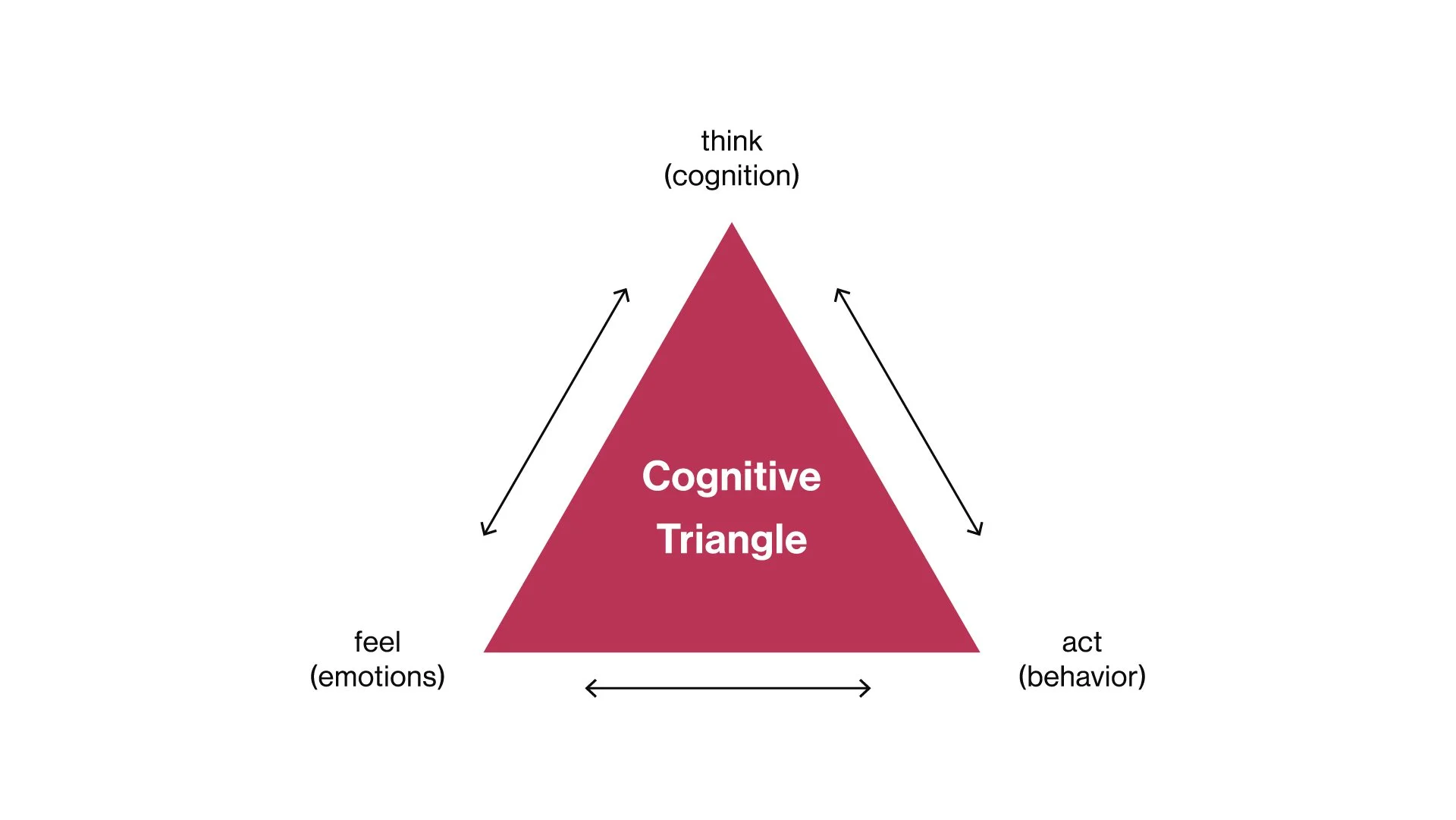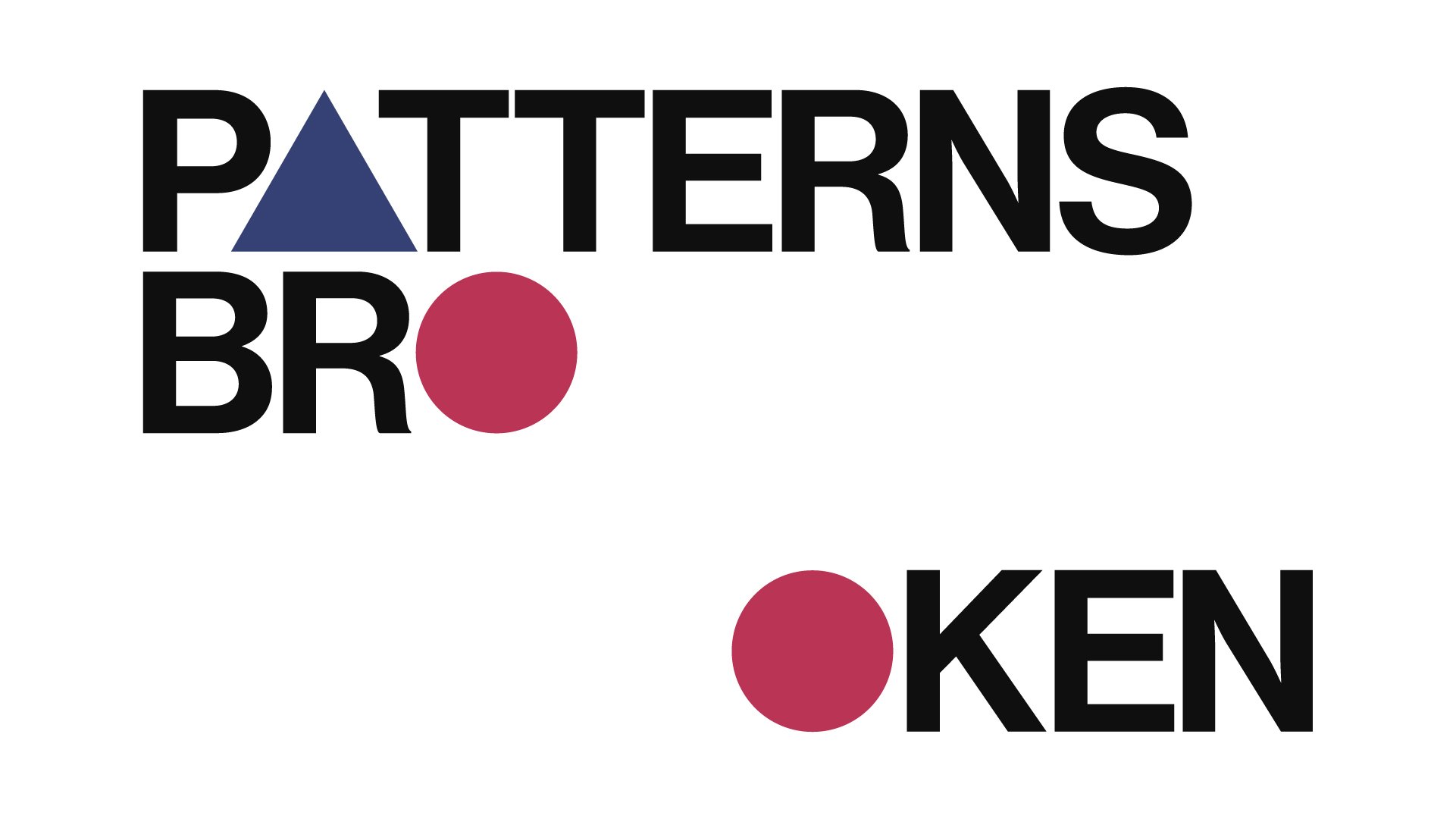Patterns Broken: Breaking Down the Visual Identity
Cognitive Behavioral Therapy (CBT) is the most common type of psychotherapy in our time. Developed and established by Aaron T. Beck in the 1960s, CBT is based on the idea that how we think (cognition), how we feel (emotion), and how we act (behavior) all interact together. In other words, how we think about an event affects how we feel, which then influences how we respond.
CBT aims to help people become aware of unhealthy cognitive and behavioral patterns. Basically, to recognize what stops them from feeling fulfilled. It supports people to develop skills to overcome obstacles and move forward. Positive emotions are produced throughout this process.
The framework of the picture, called Cognitive Triangle, or CBT Triangle, shows the main idea of this approach.
The key characteristics that make the CBT approach different from others are the following:
It focuses on the here and now, compared to a psychodynamic approach, for example, which explores the past.
It is structured and goal-oriented, with measurable outcomes.
It is practical and strategic with long-term results.
Another interesting characteristic of CBT is its flexibility. It is recommended as a treatment for a wide range of psychological conditions, from mild to the most severe ones.
Patterns Broken is a visual identity aiming to brand this psychotherapeutic approach. As the name implies, the entire identity revolves around the idea of breaking behavioral patterns and replacing them with healthy ones. This concept aims to encourage individuals to ask for help when struggling to break their patterns and also, to emphasize how important and courageous it is when someone breaks unhealthy patterns.
Central elements of the visual identity are geometric shapes. Filled triangles and circles create a modern and strong visual atmosphere. The identity is based on simple and clean layouts, with the type and geometric shapes interacting with each other. With a visual language that is easy to understand by anyone, the brand reflects the flexibility and welcoming character of the CBT approach.
The logomark consists of two circles and one triangle. The two circles represent behavioral cycles. In psychology, a behavior is considered a pattern when it happens at least twice within a certain period and often enough to show a trend that causes noticeable effects on a person’s life. A triangle pointing upward on top of the two circles disrupts the pattern. It symbolizes the cognitive triangle but also serves as a symbol of growth, transformation, and progress.
The logo system is based on a dynamic logotype that breaks and adjusts to the space around it. “Patterns Broken” is written in Neue Haas Grotesk, a modern, sans-serif typeface with a warm and versatile character. Typography is also set in the same typeface in different weights. It is highly legible, while its flexibility makes it suitable for both print and digital applications.
The color palette combines warm and cool tones. Learning how to accept and experience all emotions is central in CBT. The colors represent the range of emotions that exist in humans. Through this identity, the brand communicates that all emotions are necessary to live a fulfilling life. The white background with black typography keeps the layout balanced, professional, trustworthy, respectful and appropriate for the context.
Patterns Broken was a mentally challenging project. The brand name and concept changed many times before becoming what it is. It took months to find a name that tells the whole story of CBT while also being empowering and relatable. Almost ready to give up, inspiration came unexpectedly during a conversation with a friend about our own patterns. Once I figured out the name, the project just flowed and became what it is—certainly one of my favorites.
I was once told that recognizing and accepting our patterns is the most difficult step of a therapeutic process. Also the most important. So, to anyone reading this, I hope you find the courage to take this step, uncover the patterns that hold you back and dare to believe in transformation and change.
Ms.

